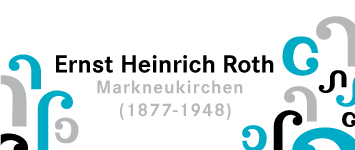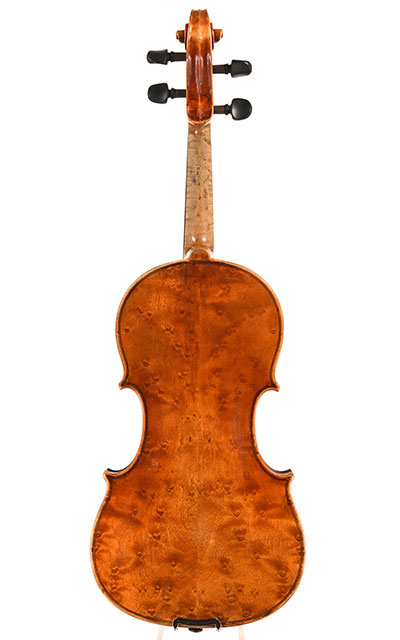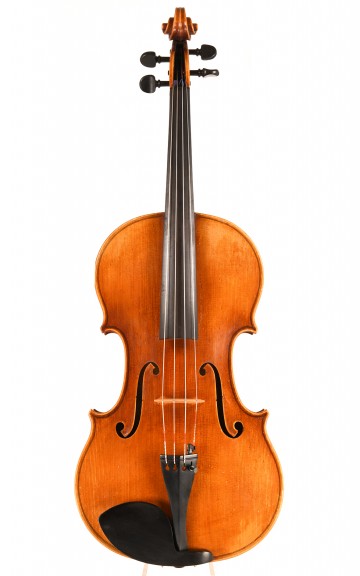Ernst Heinrich Roth: A brief violin maker biography and company history
German violin maker Ernst Heinrich Roth (1877–1948) has ranked among the best internationally known names in German violin making for over 100 years. The roots of today's Bubenreuth-based Ernst Heinrich Roth workshop lead back to the Vogtland violin-making town Markneukirchen – and to a master of the art whose major successes paradoxically led him to be profoundly underestimated.
Ernst Heinrich Roth article overview
- The apprenticeship and journeyman years of the young Ernst Heinrich Roth
- Characteristics of Roth's violin making oeuvre
- Family traditions in the footsteps of Ernst Heinrich Roth
The apprenticeship and journeyman years of the young violin maker Ernst Heinrich Roth
Ernst Heinrich Roth, born in 1877, had the ideal prerequisites for attaining musical greatness.  As talented musician who played several instruments and had perfect pitch, he began his career by completing his training in the atelier founded by his father, Gustav Robert Roth, in 1873. Ernst Heinrich then studied under violin makers in Austria, Hungary, Russia and France and later returned to his home country with extensive knowledge of the art. His skill and musical training helped Ernst Heinrich Roth become one of the finest craftsmen of the 20th century – and one of the most successful entrepreneurs in the field.
As talented musician who played several instruments and had perfect pitch, he began his career by completing his training in the atelier founded by his father, Gustav Robert Roth, in 1873. Ernst Heinrich then studied under violin makers in Austria, Hungary, Russia and France and later returned to his home country with extensive knowledge of the art. His skill and musical training helped Ernst Heinrich Roth become one of the finest craftsmen of the 20th century – and one of the most successful entrepreneurs in the field.
Characteristics of Ernst Heinrich Roth's violin making oeuvre
Ernst Heinrich Roth violins were mostly patterned after works by Stradivari or Guarneri. Roth's Amati violins are more rare, his copies demonstrated aesthetic perfection and produced ideal sounds. The violin tops were made of fine-grained Italian spruce, and the backs were of deeply flamed maple, often as a single piece. Ernst Heinrich Roth master violins of the 1920s and early 1930s shared these defining characteristics of violin material quality. Ernst Heinrich Roth's violin also shared an oil-based varnish, usually of reddish-brown colour on a golden background, and featured masterful craftsmanship applied with meticulous care. Despite the quality of his work, the exceptional value of Ernst Heinrich Roth's master violins was long overshadowed by the major sales successes of his workshop, which Ernst Heinrich jointly founded with his cousin Gustav August Ficker in 1902.
Family traditions in the footsteps of Ernst Heinrich Roth
The Erns Heinrich Roth workshop quickly gained a foothold on the international market thanks to the broad range of quality and prices they offered. Ernst Heinrich Roth's son Ernst Heinrich Roth II emigrated to the US in 1921 and became one of the leading instrument dealers in North America with his company, Scherl & Roth. His brother Gustav Albert Roth stayed in Germany, learned the art of violin making and took over the family business after their father died in 1948. The family fortune was expropriated in 1953, at which point they left Saxony in East Germany, the GDR, and re-established the business of “Ernst Heinrich Roth” in the Franconian town of Bubenreuth in West Germany. They were quickly able to return to the entrepreneurial successes they enjoyed before the war. Nowadays, a branch office in the Markneukirchen workshop represents the company where it first originated; business is managed by Ernst Heinrich Roth (III) and his son Wilhelm Roth, who were awarded the German musical instrument prize for their work in 1992 and 2009. Today, competition from Asia have led the company of Ernst Heinrich Roth reduce their violin making activity. A small Ernst Heinrich Roth workshop is still operating with one employed violin maker in Markneukirchen.
Further reading:
The violin making competition of Cremona
Bow maker and entrepreneur H. R. Pfretzschner
Hopf: a dynasty of Vogtland violin makers
Markneukirchen: violin making in “German Cremona”
Nicolas Lupot - the "French Stradivarius"
How to select a violin: provenance, value and violin appraisal
Beares, J & A Beare: expertise in changing times
Contemporary violin makers - the modern artisan elite
Violin makers from China and Taiwan
Originally published by Corilon violins.




